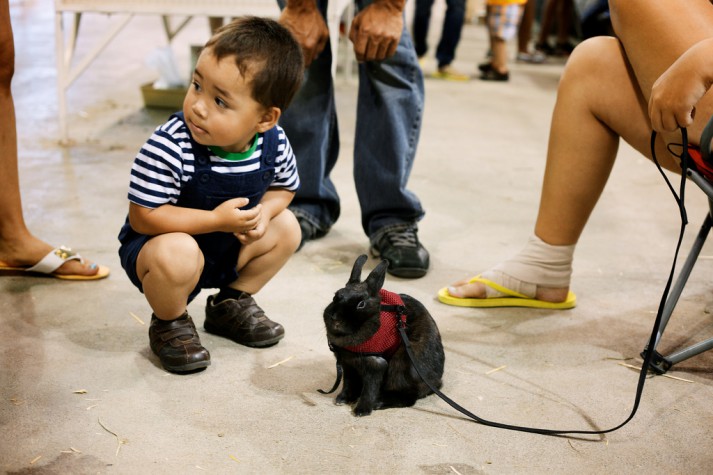Can you do a bodyweight squat? Great!
Now, can you do a PROPER bodyweight squat?
Right now you’re asking, “What’s the difference, Steve you weirdo?!”
Today I’m gonna drop some bodyweight squat knowledge bombs on you. Don’t worry, they don’t hurt! Instead, they’ll make your body feel good, and you’ll say: “OOHHHHHHHH, that’s what a squat is!”
Like other basic movements like the pull-up and push-up, most people think they know what a bodyweight squat is, and they think they’re doing them right… but are they?
Judging by the people in my gym, 80%+ of people are actually making some major mistakes in their squat, making the movement inefficient at best and dangerous at worst!
If you have any interest in ever being able to do a barbell squat, you need to first nail the mechanics for a proper bodyweight squat.
We got you covered: the end of this article you’re going to know exactly what to do and how to remind yourself to keep good form.
We were recently at Camp Nerd Fitness, and NF Team members Staci and Jim along with myself put together a quick 5 minute video for you explaining the ins and outs and the problems people have with bodyweight squats.
Watch the video and check out the mistakes most people are making with bodyweight squats below.
5 Common BodyWeight Squat Mistakes
Click squat video above, or view here.
Mistake #1: You stance is too wide or too narrow! Everybody is genetically different, with different sizes, leg and torso lengths, etc – but even still – there are a few key points for any squat that we want to achieve.
We see people often stand too wide or too narrow with their feet, and thus their squat suffers by failing to get low enough or being off balance. A big part of this comes down to hip mobility – sometimes our bodies can’t yet get as low as we should be able to.
Solution: Set your feet about at shoulder width apart, with feet turned slightly out (15-30 degrees). Not parallel with each other like railroad tracks – this can prevent proper depth, twist knees, or mess with your balance.
Mistake #2: Your knees don’t track over your feet! Imagine you drew a line from your heel to your toe, and extended that line in both directions for infinity. Your knees should bend and flex over that line.
If the knees collapse inwards (the most common issue) then you may very well be able to squat low, but you are going to be putting a lot of undue stress on the knees. Your knee is supposed to be a hinge. Putting sideways stress on your knee is a bit like hanging off of a swinging door. Sure, you could do it, but it just isn’t built to take that kind of beating!
Solution: Start in a good position! Before you even start to descend into the squat, think “knees out!” Turn your kneecaps out so they track right over your feet. Your feet and body aren’t moving – just the legs and knees! Try it right now wherever you are sitting or standing: keep your foot stationary, but aim your knee like a flashlight to face different directions.
Mistake #3: You don’t squat deep enough (a power curtsy!). Some people think squatting below parallel is dangerous for your knees. If that’s true then your knees would explode every time you went for a run, climbed a step, or sat in a chair. Your knees actually get STRONGER and healthier when you squat deeper. Deep squatting makes for a complete movement that recruits all muscles in your legs. When you only squat a bit, you’re not recruiting all leg muscles, and that leads to imbalance and injury.
We are not advocating that you squat into a range of motion that causes pain. The first rule of exercise is “do no harm!” But we often see a host of people not squat low enough either out of fear, misinformation, ego (too much weight on the bar!), or just because they’ve made another mistake on this list.
Solution: Squat like a toddler. Ever see a toddler squat down? How low do they go? Until the backs of their legs touch their calves, right? If you can do this, congratulations! Many have lost the necessary mobility or strength to be able to do this.
If you lack the strength, try grabbing onto a door, squat rack, or workout box to assist you into a deeper range of motion. If even this doesn’t help you, then mobility is your weak point. Practice the assisted squat as seen in the video and spend time pausing in the bottom and you’ll be on your way to improved mobility in no time (note: this will be difficult at first).
Mistake #4: You don’t keep your back straight and core tight. “Straight” doesn’t mean that your torso should remain straight up, perpendicular to the ground like a telephone pole. That’s not how the body moves naturally. We naturally lean a bit forward as we drop down into the squat.
By “straight” we mean that the natural curvature of the spine should be maintained for the entire squat movement. If you drop to the bottom of the squat and look like Gollum hunched over the One Ring, then we have a problem if you ever want to squat with extra weight.
Solution: Think: “chest up”. This doesn’t mean “head up” – chest means your chest. Don’t let your head fool you. Puff it up a bit in your squat, like Superman. Did you know that the S actually stands for squats? Yeah, true story.
Be sure to keep your midsection tight and engaged. It should feel like all the muscles around your middle are tensing a bit – like when you cough, or if you were Neo bracing from a punch from Mr. Smith.
Mistake #5: You get up on your toes. Keeping your feet on the ground is essential for a strong and balanced squat. It is your foundation! If you are just squatting down to grab something or look under something, then popping up on the toes a bit is of little concern, but if you are training your body to eventually move weights around (whether in the gym or everyday life), it will benefit you to keep the feet on the ground during your workouts.
Solution: Keep your heels down.
Bonus Mistake #6: You’re overly concerned with your knees going past your toes on your squat. This is an old wives tail bro myth that makes a lot of people freak out over nothing! Depending on your genetic makeup and physiological makeup, your knees may very well go past your toes on a deep squat. This is not the end of the world!
Solution: Let the knees and ankles flex how they were designed! It is a combined effort the hip, knee, and ankle closing that will get you in a deep, strong squat!
Any preexisting conditions or knee pain notwithstanding, there is no risk to the knees by allowing them to go forward of the toes. There is not a magical field that lives in front of your feet that destroys knees that drift too far. If this were the case, we’d see legions of crippled olympic weightlifters – where the knees go WAY past the toes– heck, they even wear shoes with elevated heels so that they can get their knees forward more!
Start doing better squats today!

There you go, my dear rebel friend, you now have everything you need to get started down a healthier path to crushing pull-ups.
To recap:
- Your stance is too wide/narrow
- Your knees cave in/don’t track over feet.
- You squat too high.
- Your backs rounds
- You lean forward on your toes
- Bonus: You worry about your knees going past your toes
Check back later this week for more articles and videos on how to improve your favorite bodyweight movements. And if you’re not already signed up for our email list, make sure you are so you don’t miss email-only bodyweight information this month!
-Steve
###
source https://www.nerdfitness.com/blog/2016/10/14/5-common-mistakes-when-doing-a-proper-squat/

No comments:
Post a Comment